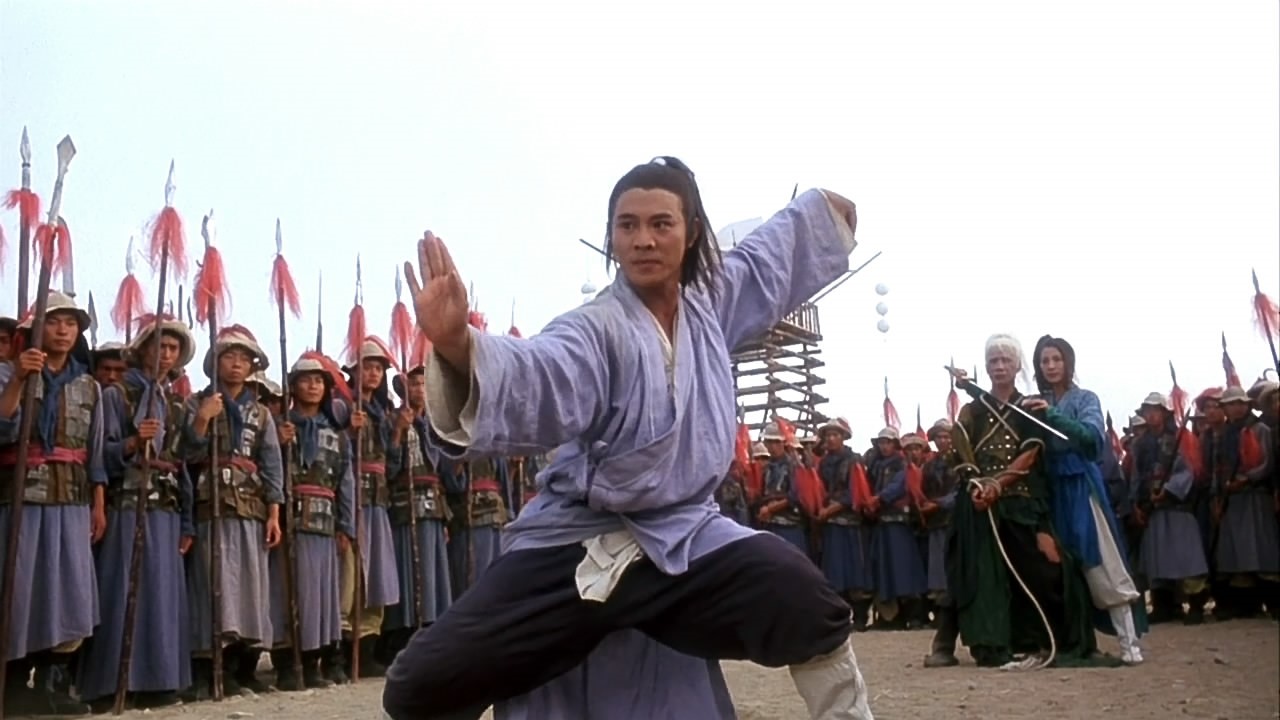Tai Chi, which originates from traditional Chinese martial arts,is characterized by a harmonious combination of deliberate movements, breath control, and mindfulness. It is seen not just as a kind of physical exercise but also as an art form that promotes overall well-being. Understanding its origins in martial arts leads us to examine its importance in modern self-defense methods.
Tai Chi is based on essential philosophical ideas that highlight the integration of mind and body. This martial art, often known as “moving meditation,” utilizes deliberate, flowing motions to improve balance, flexibility, and inner peace. Tai Chi is the foundation for self-defense tactics because it includes the notions of surrendering, redirecting, and saving energy.
Is Tai Chi good for self-defense?
“Tai Chi, despite its graceful and slow movements, is highly effective for self-defense. Its martial arts principles focus on redirecting force, enhancing balance, and fostering internal strength. While not conventionally aggressive, Tai Chi’s techniques equip practitioners with invaluable skills for self-protection. By promoting mindfulness, spatial awareness, and strategic movement, Tai Chi empowers individuals to defend themselves efficiently. Studies highlight its benefits, including improving reflexes, agility, and overall well-being. Tai Chi’s emphasis on holistic development, encompassing mental clarity and emotional resilience, further enhances its suitability for self-defense scenarios. For those seeking a harmonious yet potent means of self-protection, Tai Chi offers a compelling choice.”
Read: Power of Brazilian Jiu-Jitsu for Effective Self-Defense
Can Tai Chi be utilized for Self-Defense?
Apart from its benefits for health, Tai Chi’s use in self-defense has attracted the interest of many trainers. Tai Chi instructors can adapt and respond well in difficult situations due to the continuous flow of motions. Tai Chi methods provide effective defense choices by taking advantage of the body’s motion and deflecting an opponent’s force.
Evaluating Tai Chi’s Fighting Effectiveness
Understanding Tai Chi’s broad approach is necessary when evaluating its value in fighting situations. According to research, the slow, systematic motions of Tai Chi create increased awareness and reflexes, which may translate to real-life self-defense scenarios. Because of its adaptability and reliance on internal energy (‘chi),’ learners have a special benefit in defensive movements.
Tai Chi as a Form of Defense
Tai Chi’s core is defense, both philosophically and practically. Because of the rapidity of their actions, masters can deflect and neutralize incoming forces with minimum effort, which is a hallmark of effective defense. The defensive element of this martial art extends beyond physical engagements, incorporating mental and emotional resistance as essential components of self-protection.

Choosing the Best Tai Chi Style for fighting
There are several Tai Chi styles, each with its own set of qualities and uses. To choose the most fight-oriented Tai Chi style, you need to understand their subtle variances. Some schools stress aggressive approaches, while others focus on balancing and internal energy growth, which influences their effectiveness in fighting scenarios.
Understanding Tai Chi’s Defensive Principles
Tai Chi, which is strongly based on traditional martial arts philosophy, represents a combination of physical movement and spiritual growth. Tai Chi, at its foundation, promotes harmony, balance, and the synchronization of mind and body. Understanding its defensive principles requires diving into its philosophical fundamentals and practical implementations.
Philosophy Behind Tai Chi
The theory of Tai Chi is based on concepts like yin and yang, highlighting the interaction of the opposite as a need for balance. This concept goes beyond physical movement, training trainees to prepare for and counter opponents in fights and everyday life.
Physical and Mental Harmony
The concept of ‘Qi’ or ‘Chi,’ the essential life force energy, is central to Tai Chi. Trainers control and flow this energy throughout the body through slow, deliberate movements and regulated breathing, producing a feeling of internal peace. Coordinating breath, movement, and mental attention is the foundation of Tai Chi’s defensive powers.
Application of Defensive Techniques
Tai Chi’s defensive strategies are based on its philosophy and encourage redirection over direct conflict. Students learn to submit to force, divert it with minimum resistance, and therefore neutralize hostility. The defensive methods of the art stress movement, flexibility, and a calm mind, all of which are necessary for self-defense situations.
Internal Strength and Balance
Tai Chi is distinguished by a focus on developing inside power rather than relying primarily on outside physical force. This internal power, gained through regular practice, allows trainees to retain balance, stability, and resilience, all of which are important components in defensive postures and movements.
Mental Clarity and Alertness
Tai Chi produces mental clarity and increased awareness in addition to physical motions. Staying present, keeping attention, and recognizing potential dangers are all required skills in effective self-defense situations.
Can Tai Chi be utilized for self-defense?
Tai Chi’s seemingly slow and gentle movements might confuse observers regarding its effectiveness in self-defense. These planned movements, however, mask a practicality designed for everyday situations. The methods stress balance, stability, and force redirection, giving learners effective defensive options.
Exploring the Effectiveness of Tai Chi Movements for Defense
The success of Tai Chi in self-defense originates from its focus on redirection rather than fighting. Its round, flowing motions allow learners to deflect and neutralize strikes quickly. Tai Chi learners learn to preserve energy while efficiently repelling aggression by utilizing an opponent’s force.
Examples of Tai Chi Techniques Applicable to Self-Defense Scenarios
Several Tai Chi techniques are applicable in self-defense situations. By utilizing circular arm motions and adjusting the weight of the body, “Grasp the Sparrow’s Tail” instructs professionals on how to redirect the energy of an opponent. Likewise, the “Single Whip” technique entails the extension and redirection of arm movements, creating a vulnerability that can be exploited for defensive or counter-offensive purposes.
Evaluating Tai Chi’s Fighting Effectiveness
Tai Chi’s reputation for fighting effectiveness often sparks debates. While its slow, graceful movements might appear incompatible with Fight, this art’s principles can be remarkably effective in actual confrontations. Tai Chi emphasizes strategic positioning, balance, and the redirection of an opponent’s force, offering valuable defensive capabilities.
Addressing Limitations or Misconceptions About Tai Chi in Fight
Despite its strengths, Tai Chi encounters misconceptions about its fight applicability. Critics often cite its slow pace as a limitation in fast-paced fight situations. However, this overlooks Tai Chi’s essence, which prioritizes efficient movement, timing, and the redirection of force over sheer speed. Another misconception involves underestimating Tai Chi’s ability to generate power, disregarding its focus on internal energy cultivation for effective strikes.
Exploring the Defensive Aspects Inherent in Tai Chi Practice
Tai Chi, often recognized for its gentle and flowing movements, inherently embodies defensive principles. Its foundation lies in redirecting energy, evading attacks, and maintaining equilibrium. The art’s defensive techniques focus on using minimal force to neutralize aggression, promoting a holistic approach to self-protection.
Comparing Tai Chi’s Defensive Nature to Other Martial Arts
Tai Chi is distinguished from more explicitly aggressive martial arts by its prioritization of defensive strategies over offensive ones. In contrast to styles that emphasize striking or grappling as their primary focus, Tai Chi places emphasis on redirection, yielding, and controlled movement. Tai Chi, in contrast to other martial arts that may excel in physical fights, emphasizes deflection and evasion in its strategies, thereby providing professionals with a tactical advantage.
Contrasting Defensive Approaches
Unlike martial sports that emphasize powerful punches or quick takedowns, Tai Chi’s defensive philosophy focuses on harmonizing with an opponent’s motions. Rather of confronting force with force, Tai Chi practitioners learn to gently redirect and neutralize strikes, leveraging their opponent’s energy against them.
Holistic Defensive Practice
Tai Chi’s protective idea goes beyond physical engagements. It includes mental clarity, emotional stability, and increased awareness, emphasizing the concept that self-defense is more than just physical tactics.
Choosing the Best Tai Chi Style for Fighting
Tai Chi encompasses various styles, each with distinct characteristics and emphases. The most commonly practiced styles include Yang, Chen, Wu, Sun, and Hao. These styles differ in their stances, pacing, and emphasis on certain aspects, such as health, meditation, or fight applications.
Considering Factors for Selecting a Tai Chi Style for Self-Defense Purposes
When choosing a Tai Chi style for self-defense, several factors merit consideration. The practitioner’s objectives play a significant role, whether seeking health benefits, meditation, or practical self-defense skills. Additionally, personal preferences regarding pace, intensity, and the availability of experienced instructors specializing in fight applications should be considered.
Conclusion
In conclusion, Tai Chi, often perceived as a gentle art form, boasts remarkable effectiveness in self-defense. Its emphasis on balance, redirection of force, and holistic well-being makes it a valuable tool for personal protection. While Tai Chi may not focus solely on aggressive fighting, its principles offer practitioners practical strategies for dealing with threats effectively.










